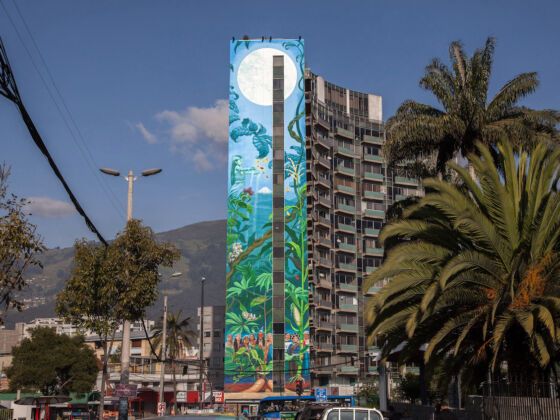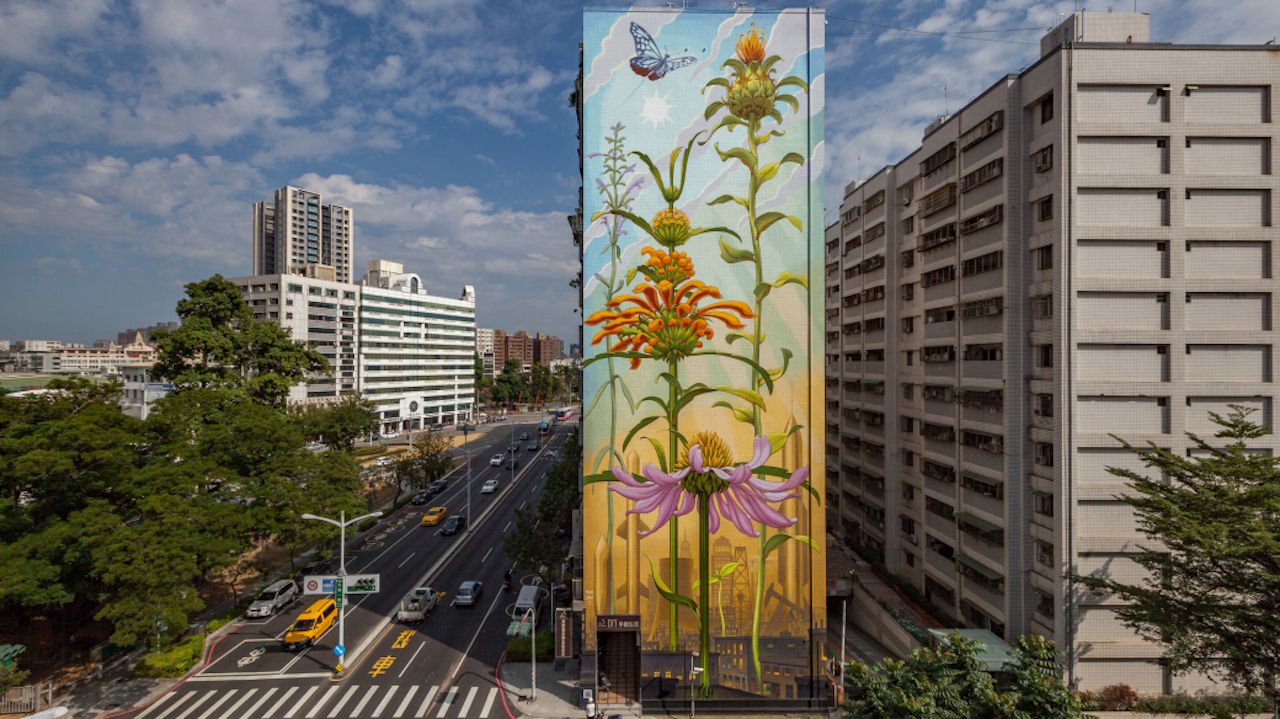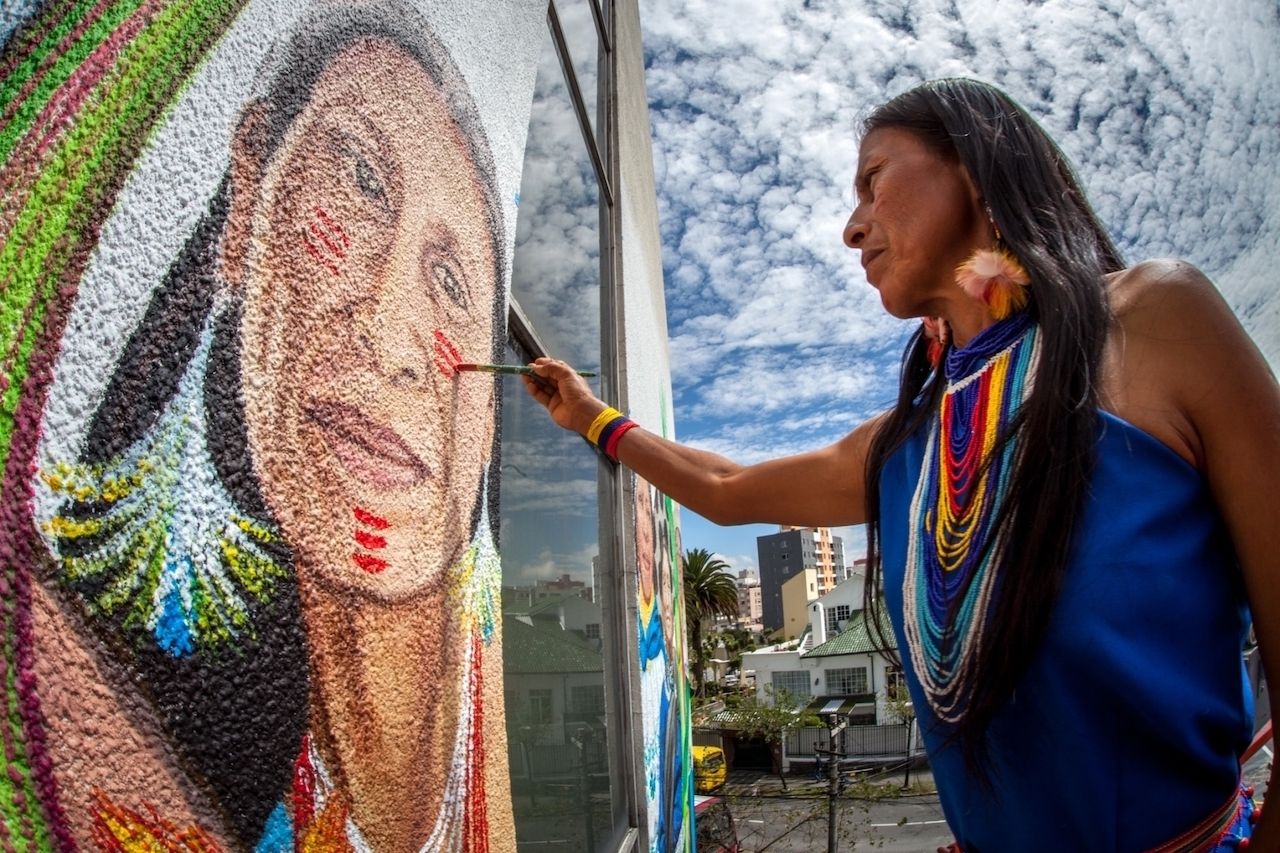If you find yourself in downtown Quito, Ecuador, there’s a good chance you’ll see a very large mural proudly illuminating the side of a tall, multi-floor apartment building — standing out in bright contrast to the muted colors of the city.
It’s an arresting image of a plant soaring towards a massive moon. An Indigenous girl reaches out as the seeds of precious corn plants fall beyond her reach, while a leaf pours the countryside’s water down to a thirsty city. At the base of the mural are distinctive Indigenous women standing among the plants and their mighty roots.
The mural is the work of Ecuadorian artist Raúl Ayala and Mona Caron — a Swiss-American artist whose work champions the people and plants that society passes by.




